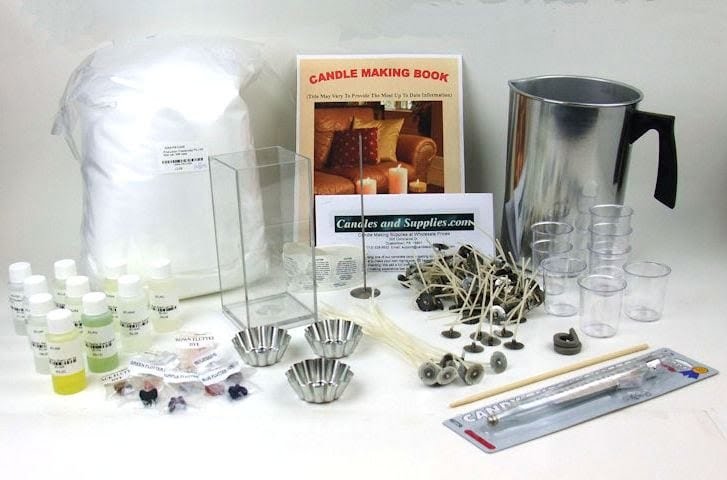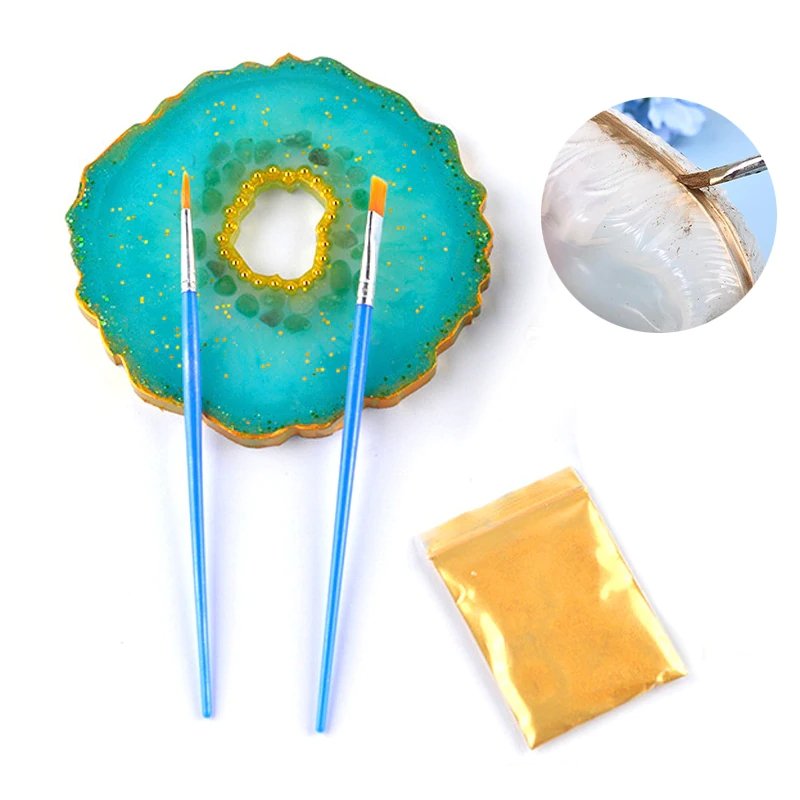In the bustling towns and quaint villages of Colonial America, the soft glow of candlelight filled homes, workshops, and public spaces. Candles played an integral role in daily life, providing much-needed illumination as well as a symbol of prosperity and social status. The art of candle making was not only a necessary skill but also a reflection of the resourcefulness and ingenuity of early American settlers.
In this article, we delve into the fascinating world of candle making in Colonial America. We will uncover the importance of candles in this era, shedding light on their necessity for both practical and symbolic purposes. Furthermore, we will explore the craft itself – the traditional techniques employed by colonial candle makers and the tools they used to shape molten wax into works of art.
Join us on a journey back in time as we examine the materials that were commonly used for candle making during this period. From tallow rendered from animal fats to precious beeswax harvested from beehives, these materials formed the foundation for illuminating households across Colonial America.
So grab a seat by the hearth and prepare to immerse yourself in history as we provide you with a step-by-step guide to recreating the historical process of candle making. Whether you’re an avid enthusiast or simply curious about life during Colonial America, this article strives to revive an age-old tradition that once lit up homes across this young nation.
Stay tuned as we unravel more about colonial society’s dependence on candles and how these flickering flames symbolized more than just light. In subsequent sections, we will explore how candles reflected one’s social status and economic wealth within society, as well as look at how this ancient craft has evolved over time.
As we embark on this journey into the lost art of candle making in Colonial America, may it inspire you to rekindle your own creativity and appreciation for the simple pleasure of candlelight. Let’s preserve this centuries-old tradition and illuminate our understanding of our ancestors’ lives in ways that extend beyond history books.
The Importance of Candles in Colonial America
In colonial America, candles played a crucial role in everyday life. As electricity was not yet invented, candles were the main source of artificial light after sunset. Candles provided illumination for various activities such as reading, cooking, and working. They were also essential for religious ceremonies and social gatherings. This section will shed light on the importance of candles in colonial America, highlighting their necessity in daily life.
One of the primary reasons candles were so important in colonial America was the lack of alternative lighting sources. With sunlight being limited to daytime hours, people relied heavily on candles to extend their productivity and leisure time after dark. Whether it was finishing household chores or engaging in recreational activities like sewing or playing cards, candles were vital for maintaining a well-lit environment.
Furthermore, candles had a significant impact on safety during nighttime hours. Without electric lights, navigating through dark spaces was hazardous, especially outdoors where streets were poorly lit if at all. Using candles allowed individuals to safely move around their homes and communities without fear of tripping or falling.
Additionally, candles held cultural significance within colonial society. They were often used in religious practices and celebrations. Churches would hold candlelit services during special occasions or ceremonies, creating an atmosphere of reverence and solemnity. Candlelight also added warmth and intimacy to social gatherings like dinners and dances.
| Aspect | Data |
|---|---|
| Primary Source of Artificial Light | Candles |
| Safety Purpose | Navigating Dark Spaces |
| Cultural Significance | Religious Practices and Social Gatherings |
The Colonial Candle Maker’s Craft
In colonial America, candle making was not only a necessary craft but also a highly skilled art form. The techniques and tools used by colonial candle makers were intricate and unique, reflecting their dedication to this craft. Exploring these traditional techniques and tools provides insight into the craftsmanship and ingenuity of the colonial candle makers.
One of the primary tools used in colonial candle making was the dipping rod. This long, wooden rod with evenly spaced notches allowed for multiple wicks to be suspended at once. By repeatedly dipping the wicks into a vat of melted wax, layers of wax were built up over time, creating more substantial candles. Each dip had to be carefully timed to ensure even coating and prevent dripping or unevenness in the finished product.
Another essential tool in colonial candle making was the mold. Candle molds could vary in size and shape depending on the desired outcome. Typically made from metal or wood, these molds allowed for a more uniform shape and size compared to dipped candles. Molds were often made with two halves that could be taken apart once the wax had cooled and hardened. This enabled easy removal of the finished candle.
Additionally, various hand tools were necessary for trimming wicks, smoothing candle surfaces, and preparing materials such as tallow or beeswax for melting. Wick trimmers ensured that wicks were kept at an optimal length to prevent excessive smoke or flare-ups while burning. For smoothing candles, scrapers or knives were used to remove any imperfections before finishing touches like engraving or decorating.
Overall, exploring the traditional techniques and tools used by colonial candle makers illuminates their skillful craftsmanship and dedication to their trade. From dipping rods to molds and hand tools specifically designed for this craft, every aspect of candle making in colonial America required careful attention to detail. These techniques laid the foundation for future advancements in candle making as the craft evolved over time.
Colonial Candle Making Materials
Tallow: The Most Common Material
In Colonial America, the most common material used for candle making was tallow. Tallow is a type of fat that comes from animals, typically beef or mutton. It was readily available and relatively inexpensive, which made it the preferred choice for many candle makers during this time period. Tallow candles were known for their strong smell when burned, as well as their yellowish color. Despite these drawbacks, tallow candles were widely used due to their affordability and accessibility.
Beeswax: A Luxury Material
Unlike tallow candles, beeswax candles were considered a luxury item in Colonial America. Beeswax is a natural substance produced by bees that is known for its sweet smell and golden color. It was more expensive and harder to come by compared to tallow, making it a symbol of wealth and status.
Beeswax candles burned cleaner and emitted less smoke than tallow candles, making them highly desirable among the elite class. The use of beeswax in candlemaking was often reserved for special occasions or for those who could afford such luxury.
Other Materials: Bayberry Wax and Spermaceti
While tallow and beeswax were the most commonly used materials in Colonial America, there were other alternatives that some candle makers experimented with. One such material was bayberry wax, which comes from boiling the berries of the bayberry bush and skimming off the wax that rises to the surface. Bayberry wax was prized for its pleasant aroma, but it was difficult to extract in large quantities, making it less practical for widespread use.
Another lesser-known material used in candlemaking during this time period was spermaceti, which is derived from sperm whales. Spermaceti had similar properties to beeswax; it burned cleaner with less smoke and emitted a sweet fragrance. However, the use of spermaceti was limited due to its high cost and environmental concerns surrounding whaling.
While tallow and beeswax were the main materials used for candle making in Colonial America, the experimentation with alternative materials demonstrates the resourcefulness and ingenuity of candle makers during this time period.
Step-by-Step Guide to Candle Making in Colonial America Reading
Candle making was an essential skill in colonial America, providing a necessary source of light for homes and activities. Recreating the historical process can be a fascinating way to experience the traditions and techniques of the time. In this step-by-step guide, we will explore the process of candle making in colonial America.
1. Gather Your Materials:
To recreate the historical process of candle making, you will need a few key materials. First, you will need your choice of wax, such as tallow or beeswax. Tallow was commonly used by lower-class colonists due to its affordability, while beeswax was reserved for those who could afford it. You will also need a heat-resistant container to melt the wax in, such as a metal pot or tin can.
2. Melt Your Wax:
Begin by melting your chosen wax in your heat-resistant container over an open flame or on a stovetop set at low heat. Be sure to stir the wax occasionally to ensure even melting.
3. Prepare the Wick:
While your wax is melting, prepare your wick by cutting it to the desired length and attaching it securely to a wooden dowel or pencil. This will help keep the wick upright and centered during the pouring process.
4. Pour Your Candle:
Once your wax is completely melted, carefully pour it into a pre-selected mold or container that has been coated with cooking spray or oil to make removal easier later on. Place your prepared wick into the center of the mold, ensuring that it stands straight up in the wax.
5. Allow Time for Cooling and Hardening:
Once you have poured your candle, allow it sufficient time to cool and harden completely before attempting to remove it from the mold or container. This may take several hours depending on the size and type of wax used.
By following these steps, you can recreate the historical process of candle making in colonial America. This hands-on experience allows you to appreciate the craftsmanship and skill required to produce this essential item of everyday life in colonial society.
| Materials | Process |
|---|---|
| Wax (Tallow or Beeswax) | Melt the wax in a heat-resistant container over an open flame or low heat on a stove. |
| Heat-resistant container (metal pot, tin can) | Carefully pour the melted wax into a prepared mold or container coated with cooking spray or oil. |
| Wick | Cut the wick to the desired length and attach it securely to a wooden dowel or pencil. Place it in the center of the mold so that it stands straight up in the wax. |
Candle Making Workshops in Colonial America Reading
The Value of Hands-on Learning
Candle making workshops have become a popular activity in Colonial America Reading, allowing participants to immerse themselves in the rich history and traditions of candle making. These hands-on workshops offer a unique opportunity to learn about the age-old craft and experience the process firsthand. By participating in these workshops, individuals can gain a deeper understanding of the historical significance of candles and the role they played in colonial society.
Keeping Tradition Alive
Preserving the age-old tradition of candle making is one of the primary goals of these workshops. In a world driven by technology and automation, it is crucial to keep traditional crafts alive. Candle making workshops not only provide participants with practical skills but also serve as a means to pass down knowledge from one generation to another. By learning the techniques used by colonial candle makers, individuals can appreciate the meticulous craftsmanship involved in creating candles before industrialization.
A Community Learning Experience
Candle making workshops also offer a unique sense of community and connection among participants. These workshops often bring together people from different backgrounds who share a common interest in history and craftsmanship. As participants collaborate on various aspects of candle making, such as melting wax or choosing molds, they engage in conversations and exchange stories, fostering a sense of camaraderie. This shared experience creates lasting memories and connections while contributing to the preservation and appreciation of traditional arts.
Overall, candle making workshops are invaluable for preserving the age-old tradition of candle making in Colonial America Reading. They provide an opportunity for hands-on learning, promote the passing down of knowledge from one generation to another, and foster a sense of community among participants. By partaking in these workshops, individuals can not only recreate historical processes but also contribute to reviving an art form that holds great cultural significance.
The Role of Candles in Colonial Society
In colonial society, candles played a crucial role in illuminating homes and activities. During this time period, electricity was not yet available, so candles were the primary source of light after sunset. This made candle making an essential craft in Colonial America.
Candles provided much-needed light for various activities in colonial homes. Whether it was reading, sewing, or cooking, candles allowed individuals to carry out their daily tasks even after dark. The soft glow of a candle provided a warm and comforting ambiance to colonial households, allowing families to gather around and spend time together in the evening hours.
Candles also had significant practical uses outside the home. They were commonly used for lighting public spaces such as churches, schools, and meeting halls during nighttime gatherings. The flickering flame of a candle created an atmosphere that encouraged communication and community bonding.
In addition to their practical uses, candles held symbolic meanings in colonial society. They were often used during religious services as a way to represent spirituality and enlightenment. Candles were also commonly used during special occasions such as weddings and funerals to symbolize hope, love, or remembrance.
Overall, candles played an integral role in illuminating both the physical spaces and the social activities of colonial society. Their importance went beyond mere illumination; they held cultural significance and fostered social connections within communities. Without the presence of electricity, colonial Americans relied on candlelight for their daily lives, making candle making an indispensable craft during this era.
Candle Making in Colonial America
In colonial America, candle making was not only a practical necessity, but it also had significant social and economic implications. The type of candles one used could reflect their social status and economic wealth.
1. Types of Candles: In colonial America, different types of candles were available, ranging from simple tallow candles to more expensive beeswax candles. Tallow candles were made from animal fat and were the most affordable option. They emitted a strong smell when burned and produced smoky flames.
On the other hand, beeswax candles were made from the natural wax produced by bees. These candles burned more cleanly, emitted a pleasant aroma, and had a longer burn time compared to tallow candles. Beeswax candles were considered a luxury item and were often used by the wealthier classes.
2. Social Status: The type of candle one used could also indicate their social standing in colonial society. Wealthy households would typically use beeswax candles due to their higher cost and superior quality. This display of luxury signaled the social status and affluence of the family. In contrast, lower-income households would rely on cheaper tallow candles for their lighting needs. The use of tallow candles could reflect a more modest lifestyle or limited financial means.
3. Economic Implications: Candle making itself was an important industry in colonial America, providing opportunities for both small-scale producers and larger manufacturers. With the demand for different types of candles, candle makers had steady income prospects through selling their products or working as servants for wealthy households who required large quantities of beeswax candles. Those involved in the production of beeswax candles had access to valuable raw materials that contributed to their economic stability.
Candle making in colonial America went beyond purely functional purposes; it played a role in signaling one’s social status while contributing to the growth of local economies through both supply and demand dynamics. Understanding this reflection of social status and economic wealth can deepen our appreciation for the craft and its significance in colonial society.
The Evolution of Candle Making Techniques
As time passed and the world entered the modern era, candle making techniques underwent significant evolution. Advancements in technology and the discovery of new materials revolutionized the process, transforming it from a labor-intensive craft to a convenient and efficient industry.
One of the most substantial changes in candle making techniques came with the invention of the industrial revolution. With the introduction of machinery and factories, candles could be mass-produced at a much faster rate than before.
The traditional hand-dipping method, which was once prevalent in colonial America, was gradually replaced by mechanized production methods like mold pouring and continuous casting. This shift enabled candles to be made more quickly and in larger quantities, leading to greater accessibility for consumers.
Another groundbreaking development in candle making was the discovery of petroleum-based paraffin wax. In 1850, chemists found that refined crude oil could produce a waxy substance suitable for candle manufacturing. This breakthrough allowed for cheaper production costs due to paraffin’s abundance compared to natural sources like tallow or beeswax. Moreover, paraffin wax had a lower melting point than traditional materials, resulting in candles that burned more evenly and consistently.
In recent years, technological advancements have continued to shape candle making techniques. With the rise of renewable energy sources and environmental concerns, there has been a shift towards using sustainable materials such as soy wax and coconut oil. These alternative waxes not only offer an eco-friendly option but also provide increased versatility in terms of fragrance diffusion and color customization.
The evolution of candle making techniques from colonial America up until today demonstrates society’s ability to adapt and innovate over time. From manual processes to industrialization, from traditional materials to petroleum-based alternatives, from convenience-driven production to sustainable practices – each advancement reflects changes in technology, societal needs, and environmental awareness. As we continue into the future, one can only anticipate further developments that will redefine this ancient art form once again.
Conclusion
In conclusion, the art of candle making in Colonial America was not only a necessity for providing light, but it also held significance in terms of social status and economic wealth. The techniques and tools used by colonial candle makers were rooted in tradition and craftsmanship, showcasing their skill and dedication to their craft.
Although the materials used in candle making have evolved over time, from tallow to beeswax, the step-by-step process of creating candles has largely remained the same. Recreating this historical process can provide a unique insight into the daily lives of colonial Americans and the challenges they faced in illuminating their homes and activities.
Preserving the age-old tradition of candle making through workshops allows us to reconnect with our past and gain a deeper understanding of Colonial America. These workshops not only educate participants about the techniques and materials used but also serve as a way to honor our ancestors who relied on candles for light.
As we reflect on the evolution of candle making techniques from Colonial America to the modern era, it is important to recognize that while technological advancements have made lighting more convenient today, there is still great value in embracing traditional crafts such as candle making. By reviving this lost art form, we can not only preserve an important aspect of our history but also tap into our creativity and reconnect with nature’s resources.
In conclusion, candle making in Colonial America was a vital skill that played a significant role in society. By exploring this lost art form, we can gain a deeper appreciation for our ancestors’ ingenuity and resilience while finding fulfillment in preserving an age-old tradition. So why not try your hand at candle making yourself? Take part in a workshop or recreate history by following a step-by-step guide – you may find yourself captivated by this centuries-old craft.

Welcome to my candle making blog! In this blog, I will be sharing my tips and tricks for making candles. I will also be sharing some of my favorite recipes.





